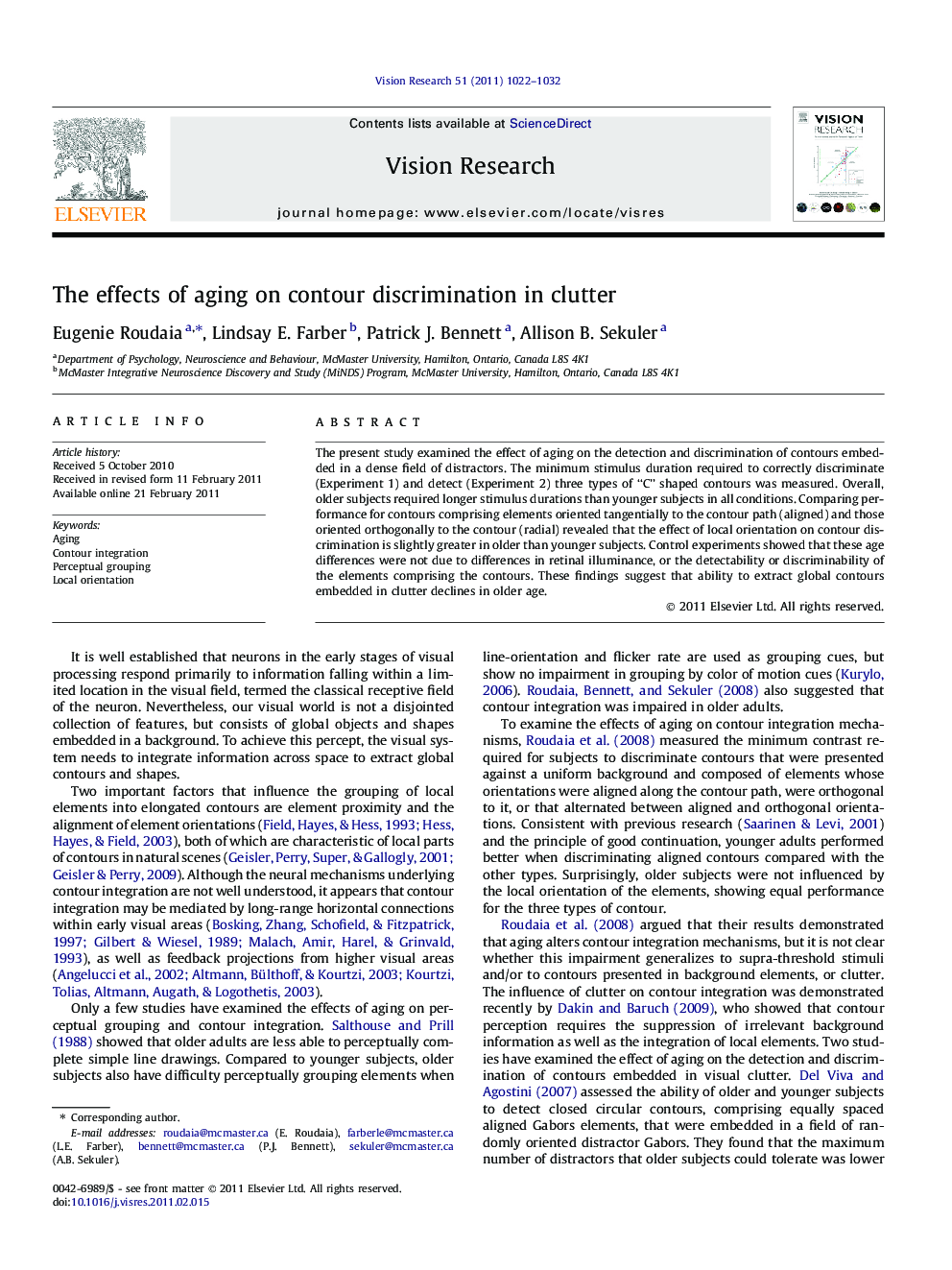| Article ID | Journal | Published Year | Pages | File Type |
|---|---|---|---|---|
| 6203773 | Vision Research | 2011 | 11 Pages |
The present study examined the effect of aging on the detection and discrimination of contours embedded in a dense field of distractors. The minimum stimulus duration required to correctly discriminate (Experiment 1) and detect (Experiment 2) three types of “C” shaped contours was measured. Overall, older subjects required longer stimulus durations than younger subjects in all conditions. Comparing performance for contours comprising elements oriented tangentially to the contour path (aligned) and those oriented orthogonally to the contour (radial) revealed that the effect of local orientation on contour discrimination is slightly greater in older than younger subjects. Control experiments showed that these age differences were not due to differences in retinal illuminance, or the detectability or discriminability of the elements comprising the contours. These findings suggest that ability to extract global contours embedded in clutter declines in older age.
⺠Duration thresholds for discriminating contours in clutter were measured. ⺠Older subjects required longer durations than younger subjects to perceive contours. ⺠This decline is not due to differences in optics, or sensitivity to contour elements.
